
A recorded overview of the 2020 Dance Arts Standards of Learning.
- Subject:
- Dance
- Material Type:
- Teaching/Learning Strategy
- Author:
- VDOE Fine Arts
- Date Added:
- 11/27/2023

A recorded overview of the 2020 Dance Arts Standards of Learning.
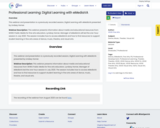
This webinar and presentation is a previously recorded session, Digital Learning with eMediaVA presented by Lindsey Horner.Webinar Description: This webinar presents information about media and educational resources from WHRO Public Media for fine arts educators. Lyndsay Horner, Manager of eMediaVA will led the one-hour session in July 2020. The session includes how to access eMediaVA and how to find resources to support student learning in fine arts areas of dance, music, theatre, and visual arts.
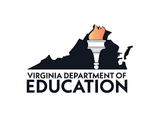
This webinar will explore the digital resources of the Library of the Congress for fine arts instruction. Engagement with primary source images, objects and documents can spark critical thinking, deeper learning and interdisciplinary connections for students. Join Sherry Levitt and Cynthia Szwajkowski from Teaching with Primary Sources, Virginia (TPSVA) for a lively, interactive exploration of the Library's rich, digital collections for in-person and virtual instruction. As a demonstration, special guest Carolyn Bennett, former Library of Congress Teacher-in-Residence, will model an activity using WPA Posters.
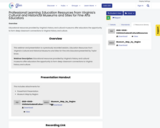
Educational resources provided by Virginia's history and cultural museums offer educators the opportunity to form deep classroom connections to Virginia history and culture.
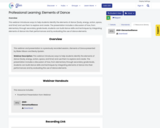
This webinar introduces ways to help students identify the elements of dance (body, energy, action, space, and time) and use them to explore and create. The presentation includes a discussion of how, from elementary through secondary grade levels, students can build dance skills and techniques by integrating elements of dance into their performances and by evaluating the use of dance elements.

Participants will explore resources, learn strategies, and practice instructional routines that elevate language and enhance language acquisition in fine arts classrooms. Participants will explore resources that integrate English language development into the fine arts curriculum, learn strategies to support the development of English, and practice instructional routines that elevate language in fine arts classrooms.
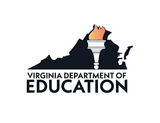
Participants will learn how to use #GoOpenVA to locate arts-based lessons (many of which are also cross-curricular). All such lessons are openly-licensed so they can be adapted to your own students and purposes. Additionally, #GoOpenVA provides a community space for teachers to connect with each other in these challenging times, when everyone is learning how to approach teaching in new ways.
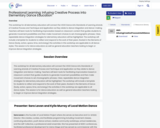
This workshop for all elementary educators will connect the VDOE Dance Arts Standards of Learning strands of Creative Process and Technique and Application as they relate to dance integration and dance-making. Teachers will learn tools for facilitating improvisation based on classroom content that guides students to generate movement possibilities and then make movement choices to set choreographic phrases. Clear, repeatable dance integration strategies for elementary educators will be highlighted. The workshop will include a template for students to reflect and respond to the work of their peers. Rooted in the Elements of Dance (body, action, space, time, and energy) the activities in this workshop are applicable to all dance styles. This session is for dance educators as well as general education teachers looking to begin or improve dance integration strategies.
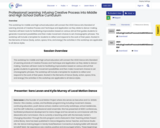
This workshop for middle and high school educators will connect the VDOE Dance Arts Standard of Learning strands of Creative Process and Technique and Application as they relate to dance-making. Teachers will learn tools for facilitating improvisation based on various stimuli that guides students to generate movement possibilities and then make movement choices to set choreographic phrases. The workshop will include a template for students to reflect and respond to the work of their peers. Rooted in the Elements of Dance (body, action, space, time, and energy) the activities in this workshop are applicable to all dance styles.
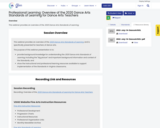
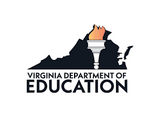
This slide deck covers key considerations for writing a fine arts curriculum and key features of an exemplary fine arts curriculum. A sample approach to curriculum writing is offered, and curriculum resources are provided. This slide deck is intended to support division leaders and individual educators who are writing a curriculum aligned to the 2020 Fine Arts Standards of Learning.
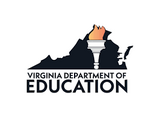
This webinar and presentation is a previously recorded session, Resources from the Virginia Museum of Fine Arts.Webinar Description: Join VMFA educators to learn about the new opportunities, resources, and supportive measures developed by Museum staff members in response to the challenges faced by teachers, students, and parents for the 2020-2021 school year. Learn about the major exhibition Treasures of Ancient Egypt: Sunken Cities, and find out about fall opportunities for online Professional Development, distance and digital learning options, remote access to VMFA’s encyclopedic collection, and more.
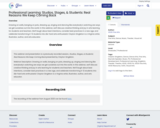
Drawing on walls, banging on pots, dressing up, singing and dancing like everybody’s watching are ways we get ourselves out into the world. In this webinar, we’ll discuss creative thinking and joy in arts learning for students and teachers. We’ll laugh about best intentions, consider best practices in a new age, and celebrate transforming K-12 students into die-hard arts enthusiasts! Clayton Singleton is a Virginia artist, illustrator, author, and arts educator.
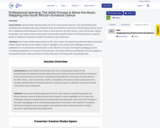
Lesson Demo: Kwame Shaka demonstrates one of his most popular lessons in this active/interactive workshop. We will explore the socio-historical roots and rhythmic movement of the Gumboot Dance, an art form created by forced laborers in the mines of South Africa in the 19th century. Learn how tempo, rhythm, and pattern are used to create a percussive and socially impactful dance. Find the potential in using the power of collective movement to build community in your classroom.Talk Back: Hear Kwame Shaka speak about his 30+ year career as a performing artist and dance educator. Kwame Shaka will discuss his origins in dance, highlights of his career and challenges faced as a professional in showbusiness and education. Learn about his Triumph of Disruption pedagogy and its correlating progressions of success in the classroom. During the talk back, participants are encouraged to ask questions and to add comments to further discussion and bring forth new perspectives.
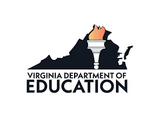
This resource demonstrates the 2020 Dance Arts Standards of Learning for grades 6-8 in a chart format that shows the progression of the standards.
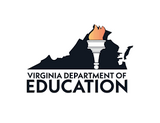
This resource demonstrates the 2020 Dance Arts Standards of Learning for grades K-5 in a chart format that shows the progression of the standards.
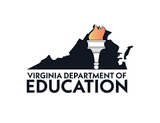
This resource demonstrates the 2020 Dance Arts Standards of Learning for levels I-IV in a chart format that shows the progression of the standards.
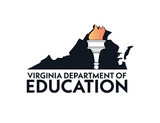
The attached infographic resource document descibes ways to engage English Learners in dance classrooms by making learning visible, supporting the language of visual arts, connecting learning to students' backgrounds and skills, using cooperative learning structures and strategies, and reducing cognitive load and allowing processing time.

This is a playlist that contains 5 videos that are designed to help Middle and High School music teachers incorporate Appalachian music and dance into the curriculum. It was produced by Blue Ridge PBS in collaboration with staff from the VDOE.

Virginia Roots is a video series for middle and high school music that focuses on the role of Appalachian Music and is designed to help teachers incorporate traditional music and art forms into the curriculum.
Episode 2: This video breaks down the classic old time tune, "Cripple Creek" into the individual instrumental parts and brings them all together for a live performance featuring the Biscuit Eaters, a family band comprised of the Wilkerson family. Viewers are introduced the A/B/A/B structure common in many Appalachian tunes and demonstrates the roles of the fiddle, guitar, mandolin, banjo, and upright bass.